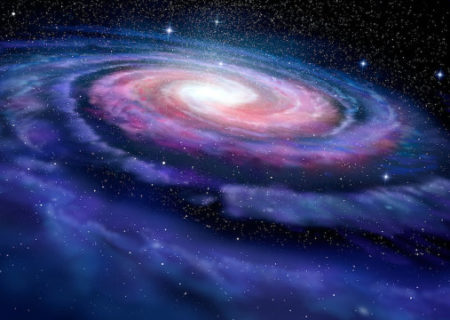Indian scientists discover 28 new Milky Way stars 30/07/2019 – Posted in: Daily News – Tags: Aryabhatta Research Institute of Observational Sciences (ARIES), Devasthal Optical Telescope, Halo of a Galaxy
INDIAN SCIENTISTS DISCOVER 28 NEW MILKY WAY STARS
For: Preliminary & Mains
Topics covered: About the finding of new stars, Variable Stars, Halo of a Galaxy, Aryabhatta Research Institute of Observational Sciences (ARIES)
News Flash
A team of scientists at Aryabhatta Research Institute of Observational Sciences (ARIES) in Nainital has identified 28 new variable stars.
- These stars found in the halo or outer part of the Milky Way galaxy.
- Which is nearly 60,000 light-years away in the constellation Coma Berenices, visible in the northern night sky.
- Studying stars in this area helps scientists to figure out the evolutionary history of the Milky Way.
Background
The first successful Indian optical observation of the afterglow of the gamma-ray burst was carried out from ARIES in 1999.
Variable Stars
- Variable stars are stars that change brightness as seen from earth.
- This variation may be caused by a change in emitted light or by something partly blocking the light.
- Two types: Intrinsic variables and Extrinsic variables.
- Intrinsic variables, whose luminosity actually changes.
- Extrinsic variables, whose apparent changes in brightness are due to changes in the amount of their light that can reach Earth.
Devasthal Optical Telescope (DOT)
- It is a powerful 3.6-meter optical telescope.
- This telescope is used by scientists to conduct photometric observation to discover the stars.
- The DOT telescope has made it possible to study the magnetic field structure of stars and the evolution of the Milky Way.
- The telescope also plays a vital role in the search for extrasolar planets and stars in the outer region and the halo of the Milky Way.
Halo of a Galaxy
- The halo of a galaxy is a nearly spherical region surrounding the galaxy like diffuse light when seen from a distance.
- Only about 1% of a galaxy’s mass resides in its halo area.
- It is coupled with low brightness.
- The observation of stars in halos is very difficult.
Where new stars found?
- The stars were found in the globular cluster NGC 4147.
- A globular cluster is a large but compact cluster of stars around a galactic core and is spherical in shape.
- Typically a globular cluster has very old stars.
Aryabhatta Research Institute of Observational Sciences (ARIES)
- ARIES is one of the leading research Institutes which specializes in observational Astronomy & Astrophysics and Atmospheric Sciences.
- The main research interests of Astronomy & Astrophysics division are in solar, planetary, stellar, galactic and extra-galactic astronomy including stellar variabilities, X-ray binaries, star clusters, nearby galaxies, quasars, and inherently transient events like supernovae and highly energetic gamma-ray bursts.
- It is an autonomous body under the Department of Science and Technology (DST), Government of India.
Source: Hindustan Times
Also, read more daily News
- New vine snake “Proahaetulla Antiqua” species discovered
- ‘CARE4U’ app for elderly persons
- The Inter-State River Water Disputes (Amendment) Bill, 2019
- Higher Earth’s temperature
- UK-India Education and Research Initiative (UKIERI)
You are on the Best Online IAS coaching platform. You are learning under experts.
We are present on Facebook- Diligent IAS, LinkedIn- Diligent IAS, YouTube- Diligent IAS, Instagram- Diligent IAS. Get in touch with us.

